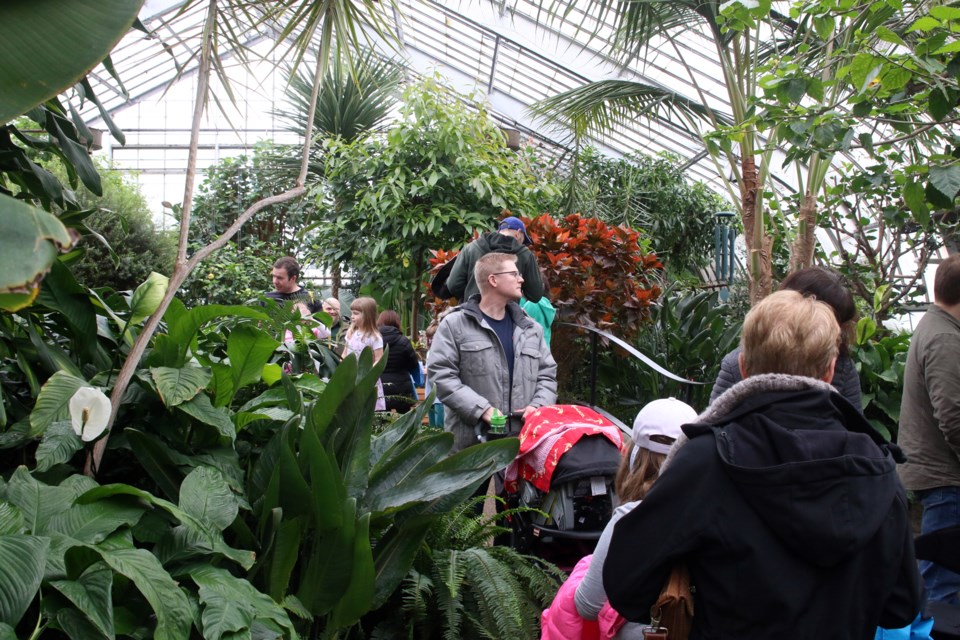THUNDER BAY – An expensive overhaul of Thunder Bay’s centennial botanical conservatory has gotten a major boost from the province.
The city confirmed Wednesday the project has been approved for up to $2 million in funding from the Northern Ontario Heritage Fund Corporation (NOHFC).
It puts the city much closer to fully funding the project, which is expected to cost well over $7 million. With the NOHFC dollars, the city has now set aside about $5.2 million of that.
The total cost includes replacement of the adjacent production greenhouses, which supply plants to parks, gardens, and stormwater management projects across the city, as well as the conservatory.
City council will be asked to award a $4.8 million tender to replace the greenhouses and add an annex connecting them to the conservatory on Monday.
For Coun. Shelby Ch’ng, whose Northwood ward includes the conservatory, it’s an exciting milestone.
“When I first got on council about eight years ago, the conservatory was at a point where there was major consideration of whether or not to close it,” she said. “So to come from that to where we are now, it’s a herculean effort.”
She gave much of the credit for that effort to the Friends of the Thunder Bay Conservatory, a group that has promoted the facility and advocated for continued funding.
Sharon Sidlar, a member of the group, expressed her excitement over the NOHFC funding Wednesday, saying it reassures her council will be able to follow through with its in-principle approval of the work sooner than later.
“It means we’ll definitely see some good work being done, and some of the changes including a reduction in energy costs,” she said.
The renewal of the conservatory itself was estimated at roughly $3 million in 2020. The work would replace glass with more efficient glazing, reopen the long-shuttered side wings, add an event room, replace the boiler, and improve accessibility.
That investment is expected to bring substantial energy savings upwards of $100,000 a year, and cut greenhouse gas emissions.
Council has approved the upgrades in principle, but has yet to set a firm timeline or budget.
The city will move forward with detailed design work in 2022, however, and the NOHFC dollars could accelerate the conservatory work to as soon as 2023, said parks manager Cory Halvorsen.
The city continues to pursue other sources of funding, with outstanding applications for millions more in support sitting with the federal Canada Cultural Spaces fund and Green and Inclusive Community Buildings fund.
The support from NOHFC will likely be seen as a positive by other funders, Halvorsen said.
The new greenhouse will have a similar footprint to the three structures it’s replacing, which are at end of life, but will significantly improve the city’s horticulture operations.
“Overall, we should be able to operate more efficiently and produce more plant material compared to the past,” said Halvorsen.
The city received two tenders for the greenhouse replacement, with local company MBuilds (formerly Manshield Construction) coming in with a low bid of $4.08 million, comparing to the city’s $3.73 million pre-tender estimate.
“A number of factors, including the ongoing pandemic and associated labour and supply chain impacts, have increased both the cost and risk of construction projects in general,” a city report stated, concluding the variance was acceptable.
The higher cost also reflects some improvements, including a cistern for rainwater capture, and a 10 per cent construction contingency of $439,000.
Administration also recommends approving five of six upgrades suggested by MBuilds, which would add roughly $300,000 to the price. Those include upgrading to five-wall polycarbonate glazing, adding LED growhouse lighting, and in-floor heating, and a drip irrigation system.
With the additions and a nearly half-million dollar HST rebate, the greenhouse replacement is estimated to cost the city roughly $4.4 million.
The improvements will pay off over the course of years by saving energy and staff time, administration found, and cut GHG emissions by close to 50 per cent.
Ch’ng hopes her council colleagues will see past the initial costs to the longer-term benefits, saying council has too often failed to do so in the past.
“That’s the nature of how council’s set up – we’re set up to think in four-year terms,” she said.
